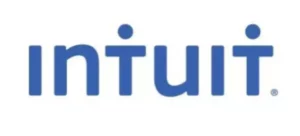Content

Keeping an accurate small business balance sheet will help you keep track of your company’s assets and liabilities, so you can easily determine your debt ratio. Balance sheets are primarily used to gain understanding and insight into a company’s financial health. These statements detail the company’s assets, liabilities and shareholder equity, offering a holistic perspective on overall financial position — specifically, what is owned versus what is owed. A balance sheet shows your company’s assets, liabilities and equity to help measure the health of your business and provide key data to lenders, investors and buyers. If your accounting process is accurate and up to date, creating a balance sheet shouldn’t be hard.
- In the Fixed Assets section, the “LESS accumulated depreciation” figure is the total of all depreciation accrued over the years on all fixed assets still owned by the company.
- A journalist and digital consultant, John Boitnott has worked for TV, newspapers, radio, and Internet companies for 25 years.
- It shows your current liabilities subtracted from your current assets to provide an accurate look at the worth of your business.
- What the income statement doesn’t show is the large amount due to suppliers in upcoming weeks.
- Easily write a business plan, secure funding, and gain insights.
- Taking control of your business finances is a large topic and one that small business owners will want to delve into much more.
Use the sheet to compare the current year with the following year to help track annual financial fluxes. Customize the template by including your company name and adding or removing line items. To conclude, preparing a report and understanding your company’s financial statements are a vital part of being a small-business owner.
Measuring a company’s financial strength
Responsible for company growth as well as the team’s motivation. Big fan of playing tennis, snowboarding, traveling, reading books, and I live and breathe our product. Current Portion of Long-term Debt — Add any loan principal that falls due within the year.
After you fill in your balance sheet with all the necessary financial data, you can begin to analyze that data. Balance sheets offer many insights, including a company’s net worth, areas requiring more organization, progress made over time, and the ability to show your business is worthy to lenders. FreshBooks provides a range of income statement and balance sheet examples to suit a variety of businesses, no matter if you have just started out or if you are looking for a different solution. By taking the time to create and regularly maintain balance sheets, you’ll be creating a valuable financial history that you can use to build and strengthen your business. Balance sheets contain comprehensive and detailed financial information.
How Can EasyBooks Help to create your Balance Sheet?
Writers are separate from our business operation and do not receive direct compensation from advertisers or partners. Read more about our Editorial Guidelines and How We Make Money. This workshop explains the importance of a balance sheet, walks you through the steps of creating a balance sheet, and provides a sample balance worksheets. Your firm’s balance sheet no doubt has more lines than this template.

A mix of historical analysis and future focus on your balance sheet will assist your business in achieving long term success. For this reason, it’s important not to wait until year-end to analyze your business finances. In the meantime, let’s look at why balance sheets are crucial for your business. If a company or organization is privately held by a single owner, then shareholders’ equity will generally be pretty straightforward. If it’s publicly held, this calculation may become more complicated depending on the various types of stock issued. Non-current or long term liabilities are typically those that a company doesn’t expect to repay within one year.
Funding for Small Businesses
A balance sheet’s balance sheet is one of three financial statements used to give a detailed picture of the health of a business. Investors and analysts will read the balance sheet alongside the income statement and cash flow statement, to evaluate the company’s overall financial position. Acceptable small business debt ratios vary widely across industries. Capital-intensive companies often have higher debt ratios than other businesses.

A small business balance sheet consists of a company’s assets, liabilities, and an overview of owner equity. You put a lot of effort into making sure your business is acquiring customers. You need to know how much money you have and how much you have available to spend. This capitalization table template includes an integrated database of shareholders, both institutional investors and employees. Easily assign share allocations to the right investor, and then drill down at any time to track and manage information about them.
The purpose of a balance sheet
Set up a document using your preferred format of rows or columns. Owners’ equity is what has been invested in the business and is left after paying debts. For a sole proprietorship, owners’ equity represents cash and property put into the business, minus withdrawals, including those for personal living expenses. Calculate your total assets by adding up both short- and long-term assets listed. Long-term assets are real estate and other property owned by the business.
